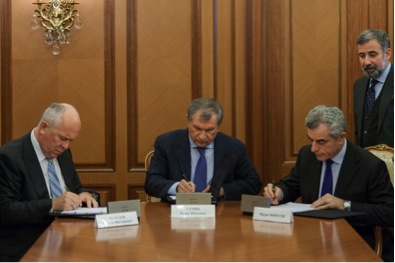Communication: The Essential Element of Collaboration in the Defence and Security Sector
Communication, understood as the sharing of meaning and customer intimacy, is the key element for building a solid partnership and successfully facing the challenges of the future.

In an increasingly complex geopolitical landscape, characterized by growing security threats and rapid technological evolution, the capacity for collective defence takes on fundamental strategic importance. To achieve this goal, it is crucial to establish a solid and dynamic partnership between Ministries of Defence and industry. The defence industry is not simply a supplier of equipment, but a strategic partner that actively contributes to national and international security.
Beyond Words: The Sharing of Meaning: To build effective collaboration, it is necessary to go beyond simple communication, understood as a mere exchange of information. The true strength of communication lies in the ability to create a sharing of meaning, a common ground of understanding and objectives between Ministries of Defence and industry.
We live in the era of hyper-connection, where the flow of information is incessant. However, the quantity of data does not in itself guarantee effective communication. To communicate means to share meanings, interpretations, visions. It is a process of collective construction that actively involves all actors.
Take, for example, the development of a new weapons system. It is not enough for the Ministry of Defence to provide industry with a list of technical requirements. Continuous dialogue is needed, an open comparison in which operational needs, technological possibilities, and strategic implications are shared and discussed transparently.
Customer Intimacy: A Bond of Trust: In this context, customer intimacy takes on a key role. It is not just a matter of meeting the customer’s needs, but of creating a relationship of trust and mutual collaboration. The Ministry of Defence and industry must work together, as partners, to achieve common goals.
Joint activities in which Ministry and industry engineers work side-by-side to analyze challenges, develop innovative solutions, and test prototypes represent a way to foster knowledge sharing, stimulate creativity, and strengthen the bond between the parties.
For Effective Collaboration: Effective implementation of this communication vision can be achieved by leveraging existing management techniques. Active listening is paramount, whereby engagement with counterparts extends beyond mere information reception to cultivate a deeper understanding of their needs and perspectives. This necessitates a conscious effort to empathize and understand the situation from their vantage point. Such an approach fosters trust and facilitates a shared understanding. It is also crucial to acknowledge limitations and challenges with transparency. Openly addressing obstacles, rather than concealing them, demonstrates intellectual honesty and strengthens mutual confidence. Regularly scheduled consultations are also essential to ensure alignment and maintain a shared vision for the collaborative effort. Ultimately, successful collaboration hinges on the collective pursuit of a common goal.”

